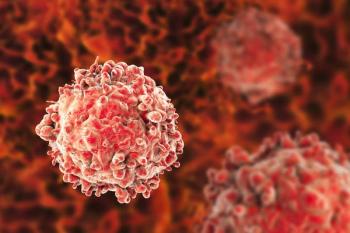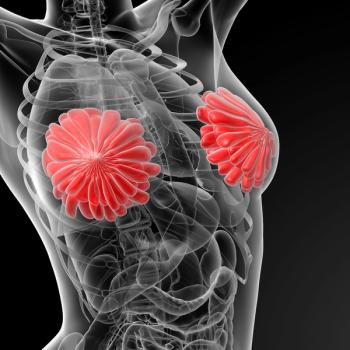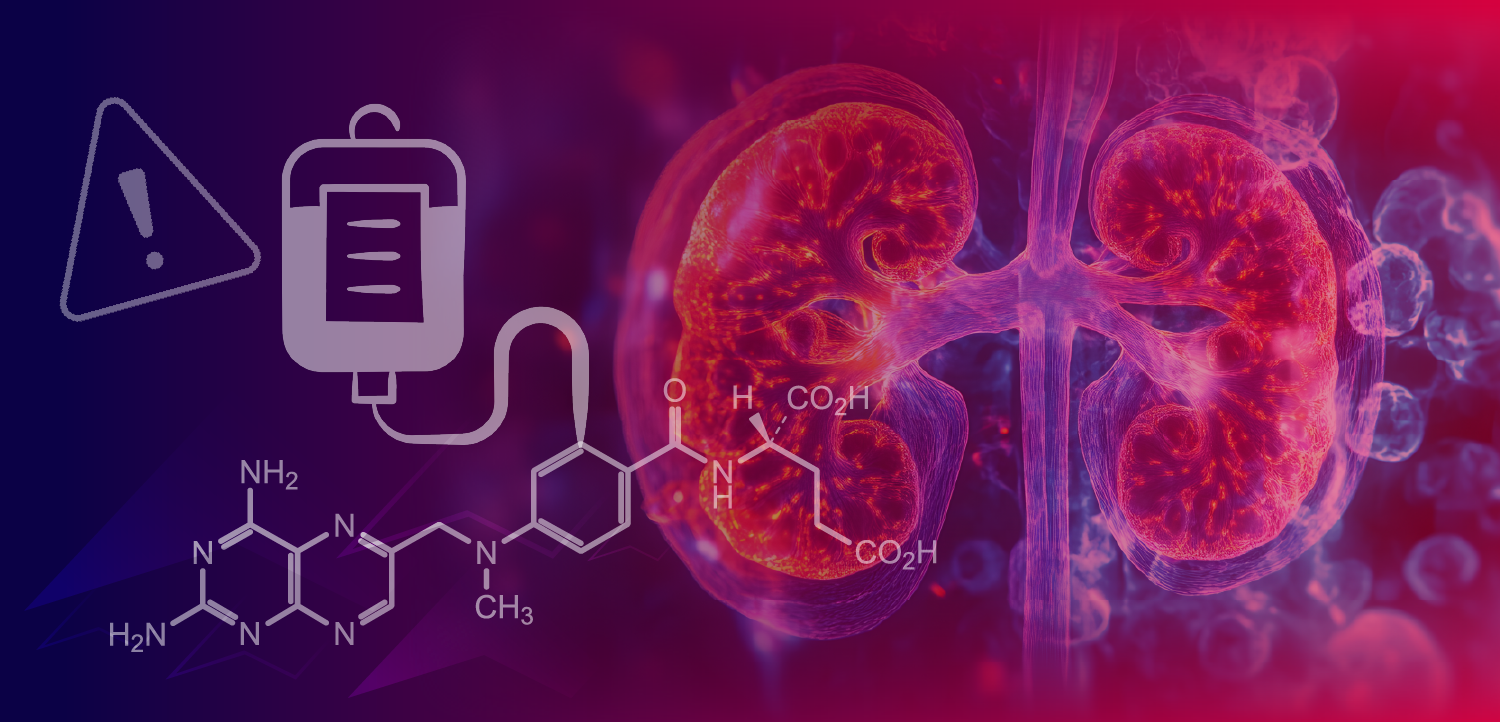
Addition of Navitoclax Improves Spleen Volume, Symptoms in Relapsed/Refractory Myelofibrosis
Study results showed that adding navitoclax to ruxolitinib resulted in a clinically meaningful improvement in spleen volume and total symptom score in patients with myelofibrosis who no longer benefited from prior ruxolitinib therapy.
Adding navitoclax to ruxolitinib (Jakafi) improved spleen volume and total symptom score (TSS) in patients with myelofibrosis (MF) who no longer benefited from prior ruxolitinib therapy, according to findings from a phase 2 clinical trial presented during the 2020 ASH Annual Meeting.
Notably, these improvements were independent of the presence of high-molecular-risk (HMR) mutations or high numbers of total gene mutations at baseline with the BCL1/BCL-XL inhibitor navitoclax regimen.
“Evidence is growing that patients being treated with JAK inhibitor monotherapy frontline are having relapse of the disease and that patients with MF who have high-risk molecular mutations, so those with an ASXL1, SRSF2, EZH2, U2AF1, and IDH1/2 at diagnosis will have a shorter overall survival and increased risk of leukemic transformation. Therefore, in this setting, the search for novel therapies, particularly those that can pair with JAK inhibitors, is warranted,” said study author Naveen Pemmaraju, MD, associate professor, Department of Leukemia, Division of Cancer Medicine, The University of Texas MD Anderson Cancer Center, during the presentation.
Preclinical trials demonstrated that the dual inhibition of BCL1/BCL-XL and JAK2 can enhance malignant cell death compared with JAK2 inhibition alone, and it is thought that this combination may overcome acquired resistance to JAK inhibitor monotherapy. This served as the hypothesis for the phase 2 study (NCT03222609), which reported on the clinical responses observed with navitoclax plus ruxolitinib in patients who no longer received benefit from the JAK inhibitor alone.
The single-arm, open-label trial included adult patients with either primary or secondary MF with splenomegaly who either failed ruxolitinib or had a suboptimal response after 12 weeks or more of continuous treatment. The study end points included percentage of spleen volume reduction (SVR) at week 24, percentage change in TSS from baseline to week 24, change in the degree of bone marrow fibrosis from baseline, and safety. An exploratory biomarker analyses aimed to assess factors that correlated with navitoclax activity.
As of the data cutoff date, 34 patients had been enrolled who had received at least 1 dose of the combination therapy, and baseline samples for biomarker analysis were available for 33 of these patients. The median age of patients was 68 years (range, 42-86), and the majority were male (68%). The ECOG performance status was either 0 (47%) or 1 (53%), and the median duration of exposure to prior ruxolitinib was 20 months (range, 4-97). Median spleen volume was 1695 cm3 (range, 465-5047).
At baseline, the median total number of mutated genes was 3, and 52% of patients harbored at least 3 mutations. Overall, 79% of patients had JAK2 mutations, 21% CALR mutations, and 59% of the patients with a CALR mutation were type 1. The median variant allele frequency (VAF) was 88% for the JAK2-mutated patients and 39% for the CALR-mutant.
HMR mutations occurred in 58% of the patients, and the most frequently observed included ASXL1 (68%) and SRSF2 (37%). At least 2 HMR mutations were observed in 42% of the patients.
At week 24, 9 of the 34 patients (27%) achieved SVR of ≥ 35% (SVR35), and a TSS reduction of ≥ 50% (TSS50) was achieved in 6 of 20 evaluable patients (30%).
The navitoclax combination also resulted in driver gene, either JAK2 or CALR, VAF reductions of > 10% in 12 of 26 patients (46%). Bone marrow fibrosis was improved by at least 1 grade at any time in 10 of 34 patients (29%).
Treatment-emergent adverse events (TEAEs) were observed in all patients, and the most common TEAEs included thrombocytopenia (88%), diarrhea (68%), and fatigue (62%). TEAEs of grade 3 or higher were observed in 85% of patients, and the most common included thrombocytopenia (53%), anemia (32%), and pneumonia (12%). The thrombocytopenia was manageable with dose modifications.
At week 24, 7 of 34 patients (21%) had improvements in bone marrow fibrosis grade, and 6 patients had an improvement of –1 grade. One patient had an improvement of –2 grades.
Overall, SVR35, TSS50, bone marrow fibrosis improvement, and VAF reduction > 10% were not impacted by present HMR mutations, nor mutations in ≥ total genes, including the driver genes and non-HMR genes.
Among patients who achieved a molecular response, defined as > 20% driver gene reduction, at week 24, 4 of 5 patients (80%) had evidence of fibrosis reversal by at least 1 grade.
In terms of inflammatory cytokine evaluations, a direct correlation between changes in spleen volume and in MF-associated cytokine levels from baseline were observed, and this correlation was seen at weeks 12 and 24 for 4 cytokines, which had been previously associated with improved TSS, including B2M, TIMP-1, TNFR2, and VCAM-1.
Additional correlations were observed at weeks 12 and 24 for MPO, as well as IGFBP7 at week 12.
“Importantly, these 2 cytokines have not been well studied in MF…their role is not yet well described. Further studies will be warranted to better understandtheir role,” Pemmaraju noted. Investigators noted that modulation of these proinflammatory cytokines correlated with reductions in spleen volume.
The cytokine analyses findings suggest that the combination can help modulate key cytokines that were previously implicated in symptom improvement. Further studies are required to understand the novel pro-inflammatory cytokine observations correlated with SVR in this study.
Reference
Pemmaraju N. Garcia JS, Potluri J, et al. The addition of navitoclax to ruxolitinib demonstrates efficacy within different high-risk populations in patients with relapsed/refractory myelofibrosis. Presented at: 2020 ASH Annual Meeting; December 5-8, 2020; Virtual. Abstract 52
Newsletter
Stay up to date on recent advances in the multidisciplinary approach to cancer.
































































































